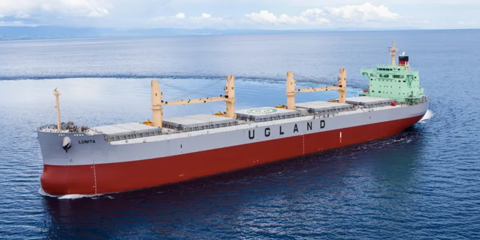Ice caps are melting at an alarming rate. Heatwaves are hitting southern Europe, the US and Asia with a vengeance.
Unusually heavy rainfall is destroying homes and infrastructure. This summer has once again highlighted the significant impacts of climate change and there is a broad consensus that everyone has a role to play in the green transition, including the shipping industry.

Unfortunately, despite the recent tightening of requirements by the International Maritime Organisation (IMO) to reduce CO2 emissions, both the UN and the EU have failed to require that ship emissions be documented using accurate data rather than the uncertain calculations that are used today.
Why not leverage the technology that is readily available so that everyone can have a more accurate picture when discussing ship emissions of CO2, nitrogen oxides (NOx), sulfur content in exhaust gases, and harmful particulate matter? This practice has been in place on land for many years.
Currently, shipping companies can simply calculate how much their ships emit. However, we know that these calculations are inaccurate and generally make emissions appear lower than they are.
In the future, shipping will rely on a combination of fuels rather than a single fuel type. This will pose challenges regarding the accuracy of calculations and make them much more difficult to perform.
Moreover, many of the new fuels depend on pilot fuels in the ignition process, leading to inaccuracies in calculations, but can be easily measured correctly.
Lastly, looking ahead, fuels like biofuel are never uniformly composed and, as a result, cannot be accurately calculated – however, they can be measured to provide an accurate representation.
Advanced equipment can accurately measure the amount of CO2 or harmful particles emitted by ships.
The technology is already available. It’s simply a matter of shipping companies making relatively modest investments in this equipment to demonstrate compliance with emission limits.
Cutting-edge equipment is readily accessible for precise measurement of CO2 and other harmful ship emissions. It’s a straightforward investment for shipping firms to showcase their commitment to emission limits compliance.
Astonishingly, numerous companies are unaware that obtaining this equipment is remarkably cost-effective. Moreover, it serves as a protective shield, safeguarding shipping entities from potential fines or sailing bans stemming from regulatory non-compliance.
Regrettably, some shipping companies mistakenly assume they can forgo measurement equipment. However, this is a misjudgment, as their reliance on calculated emissions often yields uncertain and, at worst, misleading results.
In light of continually tightening regulatory standards, precise documentation is now an imperative requirement.
If shipping companies don’t voluntarily install this equipment on cargo ships, cruise ships, ferries and other types of vessels, policymakers should consider whether it’s time to require documented emissions rather than calculated emissions.
Replacing uncertain calculations with hard data will greatly enhance the credibility of the industry and benefit the climate. Although decision-making in international fora can be slow, it underlines the urgency of taking action now.
The Industry also has an interest in documenting its actual emissions in order to remain competitive. We will see increasing demands from customers and consumers for responsible transport of goods, giving shipping companies a strong incentive to document their emissions.
They can secure a competitive advantage by providing accurate data rather than uncertain calculations.
Let’s grab the low-hanging fruit and demand accurate documentation rather than guesswork if the shipping industry really wants to join the fight against climate change.
Morten Brandborg is CEO of Green Instruments
Do you have an opinion to share?
Email: news@tradewindsnews.com
(Copyright)



